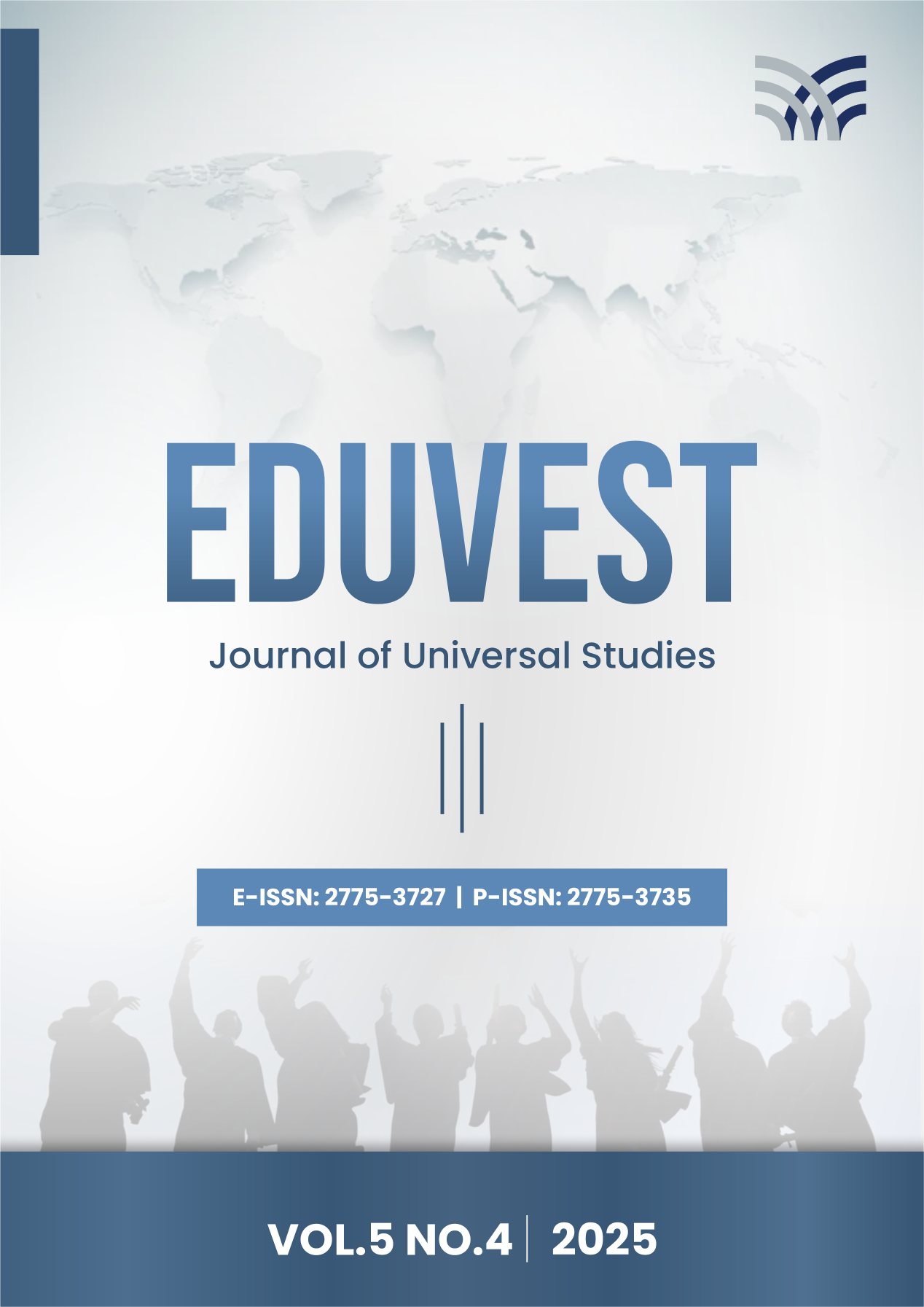Effect of Cooperative Learning Model Numbered Heads Together (NHT) Using Macromedia Flash and Powerpoint on Economic Learning Achievement in Social Studies
DOI:
https://doi.org/10.59188/eduvest.v5i4.51076Keywords:
Cooperative Learning Method, Numbered Heads Together, Learning AchievementAbstract
This research aimed to determine: the effect of applying cooperative learning model type NHT (Numbered Heads Together) with Macromedia Flash and Power point on the economic learning achievement of students of XI Social Class in SMA Negeri 11 Semarang. This research is an experimental research, with pre-test post-test control design. The population in this study includes all students of XI Social Studies Class. Samples were taken by random sampling technique obtained by two sample class, named experiment class and control class. The data collection technique used is by test instrument. The data obtained were then analyzed using statistical tests including normality test, homogeneity test, and hypothesis test. Hypothesis testing using Paired Sample t Test and Independent Sample t Test. Based on the final stages of testing, the data were normally distributed 0,730>(0,05) and homogeneous (0,530>0,05). Hypothesis test results showed that cooperative learning model type NHT with Macromedia Flash and Power point has a significant effect and can improve economic learning achievement. In the experimental group using cooperative learning NHT with Macromedia Flash has increased from an average pretest score of 72.34 to 89.35 on the average value posttest. In the control class is also an increase in the average value of pretest 72.57 to 80.23 on the average post-test score.
Downloads
Published
How to Cite
Issue
Section
License
Copyright (c) 2025 Swesty Wirasanti, Leny Noviani

This work is licensed under a Creative Commons Attribution-ShareAlike 4.0 International License.











